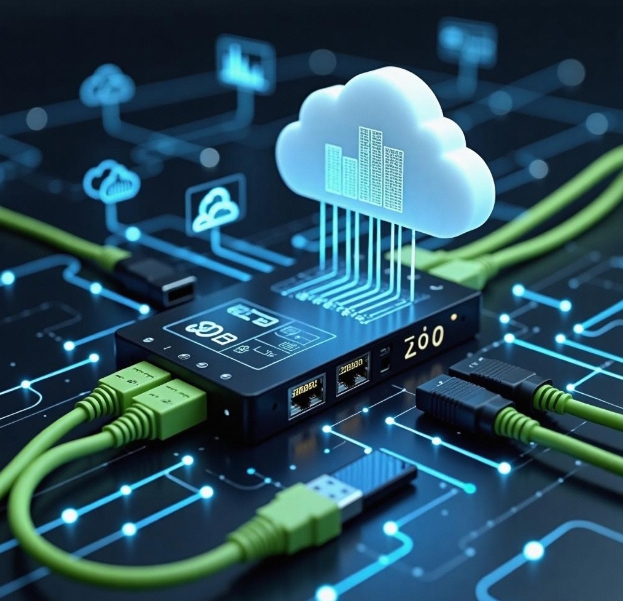How does cloud computing support seamless connectivity for cross-platform applications?
- latest articles
- 1.DApp Development & Customization: Merging Diverse Market Needs with User Experience 2.Analysis of the Core Technical System in DApp Project Development 3.How to achieve cross-chain interoperability in Web3 projects? 4.How does the tokenization of points reconstruct the e-commerce ecosystem? 5.How to Set and Track Data Metrics for a Points Mall? 6.What is DApp Development? Core Concepts and Technical Analysis 7.Inventory of commonly used Web3 development tools and usage tips 8.Development of a Distribution System Integrated with Social E-commerce 9.Six Key Steps for Businesses to Build a Points Mall System 10.What is DApp Development? A Comprehensive Guide from Concept to Implementation
- Popular Articles
- 1.Future Trends and Technology Predictions for APP Development in 2025 2.Analysis of the DeFi Ecosystem: How Developers Can Participate in Decentralized Finance Innovation 3.From Zero to One: How PI Mall Revolutionizes the Traditional E-commerce Model 4.DAPP Development | Best Practices for Professional Customization and Rapid Launch 5.Recommended by the Web3 developer community: the most noteworthy forums and resources 6.From Cloud Computing to Computing Power Leasing: Building a Flexible and Scalable Computing Resource Platform 7.How to Develop a Successful Douyin Mini Program: Technical Architecture and Best Practices 8.Shared Bike System APP: The Convenient Choice in the Era of Smart Travel 9.How to Create a Successful Dating App: From Needs Analysis to User Experience Design 10.From Design to Development: The Complete Process of Bringing an APP Idea to Life
In today's rapidly developing information technology landscape, the demand for cross-platform applications is increasingly growing. With the proliferation of various platforms such as mobile devices, desktop computers, and IoT devices, businesses and developers face the challenge of maintaining application consistency and coherence across different platforms. Cloud computing, as a powerful technological framework, provides an ideal solution. It not only ensures seamless integration of data and applications across different platforms but also optimizes the performance and scalability of cross-platform applications. This article will explore how cloud computing supports seamless connectivity for cross-platform applications and analyze its key role in this process.
I. Basic Concepts of Cloud Computing
Cloud computing is a technological architecture that provides computing services over the internet, allowing users to access resources such as servers, storage, databases, networking, and software on demand, without the need to build and maintain their own data centers. The core advantages of cloud computing lie in its elasticity, flexibility, and efficiency. It not only reduces IT costs for businesses but also accelerates innovation and application development, offering unique benefits particularly in cross-platform application development.
Through cloud computing, developers can host applications and services in the cloud, enabling users to access these services from any internet-enabled device, thereby achieving seamless connectivity across different devices and platforms.
II. Challenges of Cross-Platform Applications
With the diversification of device types and operating systems, cross-platform application development faces the following major challenges:
Platform Differences: Different operating systems (such as iOS, Android, Windows) vary in architecture, development languages, and interface standards. Applications need to support multiple platforms simultaneously, with each platform having its own requirements.
Data Synchronization Issues: Cross-platform applications must ensure seamless data synchronization when users switch between different devices. For example, information viewed on a mobile phone should automatically load the latest data when accessed on a PC.
Performance Optimization: Hardware differences between platforms can affect application performance. Optimizing performance to ensure a smooth experience across various devices is a significant challenge in cross-platform application development.
Consistent User Experience: Cross-platform applications need to maintain a consistent user experience across different devices, including unified interface design and functional layout.
III. How Cloud Computing Supports Seamless Connectivity for Cross-Platform Applications
Cloud computing plays a critical role in cross-platform applications, primarily in the following aspects:
1. Centralized Backend Support
Cloud computing provides centralized backend support for cross-platform applications. By hosting key components such as business logic, databases, and file storage in the cloud, developers can ensure that applications on different platforms access the same resources and data. This centralized architecture simplifies the development and maintenance of cross-platform applications, avoiding the need for independent deployment and configuration on each platform.
For example, businesses can use database and storage services provided by cloud computing platforms (such as AWS, Azure, Google Cloud, etc.) to ensure that applications on all platforms access the latest data. Whether users are on mobile phones, tablets, or desktop devices, data can be synchronized in real-time to ensure consistency.
2. Data Synchronization and Storage
The real-time data synchronization and cloud storage capabilities provided by cloud computing platforms are key to solving data consistency issues in cross-platform applications. By storing data in the cloud, applications can achieve real-time synchronization across devices and platforms. This means that modifications made on one platform are immediately updated in the cloud, and other platforms can instantly access the latest data.
For example, cloud storage services like Google Drive and Dropbox use cloud computing technology to allow users to access and modify files across different devices, with all changes automatically synchronized. The application of this technology ensures data consistency and user experience in cross-platform applications.
3. APIs and Microservices Architecture
APIs (Application Programming Interfaces) and microservices architecture are another major advantage of cloud computing in cross-platform applications. By breaking down applications into multiple microservices, each handling a part of the application's functionality, developers can more flexibly support the needs of different platforms. The powerful API management tools provided by cloud computing platforms enable applications on different platforms to interact with data and invoke functions through standardized interfaces, achieving seamless cross-platform connectivity.
Microservices architecture allows developers to deploy each service independently in the cloud, supporting flexible scaling and updates while ensuring data and functionality consistency across platforms. For example, mobile and web applications can call cloud-based user authentication services via APIs without needing to develop separate authentication logic for each platform.
4. Serverless Architecture
Serverless architecture is an innovative technology in cloud computing that further simplifies the development and deployment of cross-platform applications. Serverless architecture allows developers to focus on application logic without worrying about server management and maintenance. When users request services through different platforms, the cloud platform automatically allocates resources and performs computations and responses on demand. Serverless architecture supports high flexibility and auto-scaling, enabling efficient seamless connectivity in multi-platform environments.
For example, services like AWS Lambda and Azure Functions allow developers to run code in the cloud without deploying or managing servers. This approach enables developers to concentrate on application functionality development, while the cloud platform automatically handles cross-platform requests and loads.
5. Security and Identity Management
Cross-platform applications need to ensure the security of user data, especially when exchanging data across multiple platforms. Cloud computing platforms provide robust security and identity management tools to help developers ensure the security of data transmission and storage.
For example, cloud computing platforms typically offer encrypted transmission (e.g., SSL/TLS), identity authentication (e.g., OAuth), and access control features. These features protect users' personal data as it flows between different platforms, preventing data leaks or unauthorized access. Cloud computing platforms also support single sign-on (SSO), allowing users to log in on different devices without repeated authentication, enhancing the user experience.
6. Globalization and Low-Latency Support
The global deployment of cloud computing enables cross-platform applications to provide low-latency services worldwide. Cloud computing platforms typically deploy multiple data centers globally, allowing users to access applications through nearby cloud servers regardless of their location, reducing latency and improving response speed. This is particularly important for cross-platform applications, especially in high-demand scenarios like real-time data synchronization and online gaming, where low latency is key to ensuring a good user experience.
For example, platforms like AWS and Google Cloud use CDN (Content Delivery Network) technology to distribute static resources such as images, videos, and scripts to multiple nodes worldwide, ensuring fast loading for users in different regions.
IV. Case Study: Cloud Computing Support for Cross-Platform Applications
Taking "Spotify," a music streaming service, as an example, Spotify achieves seamless connectivity for cross-platform applications through cloud computing. Whether users are on mobile phones, computers, or smart speakers, the backend support and data synchronization technologies provided by cloud computing ensure consistency in music playback history, playlists, and preferences across different devices.
Spotify stores user data in the cloud and uses microservices architecture and APIs for data exchange between platforms. In Spotify's architecture, the cloud platform provides elastic scaling and high availability, ensuring a good experience for users worldwide. Additionally, Spotify leverages serverless architecture for on-demand computing and resource allocation, improving application performance and response speed.
V. Summary
The emergence of cloud computing has provided strong support for seamless connectivity in cross-platform applications. Through centralized backend support, data synchronization, APIs and microservices architecture, security guarantees, and other aspects, it helps developers address many challenges in cross-platform applications. As cloud computing technology continues to evolve, the development and maintenance of cross-platform applications will become more efficient and convenient. In the future, with the introduction of more innovative technologies, cloud computing will play an even more important role in cross-platform applications, driving digital transformation and technological innovation.
-

Applications and Challenges of Cloud Computing in the Internet of Things (IoT)
With the continuous advancement of information technology, cloud computing and t···
-

Integration of Cloud Computing and Artificial Intelligence: Enhancing Intelligent Applications
With the rapid advancement of technology, cloud computing and artificial intelli···
-

Data Security and Privacy Protection in Cloud Computing Applications
With the continuous advancement of information technology and the rapid developm···

 Blockchain
Blockchain












